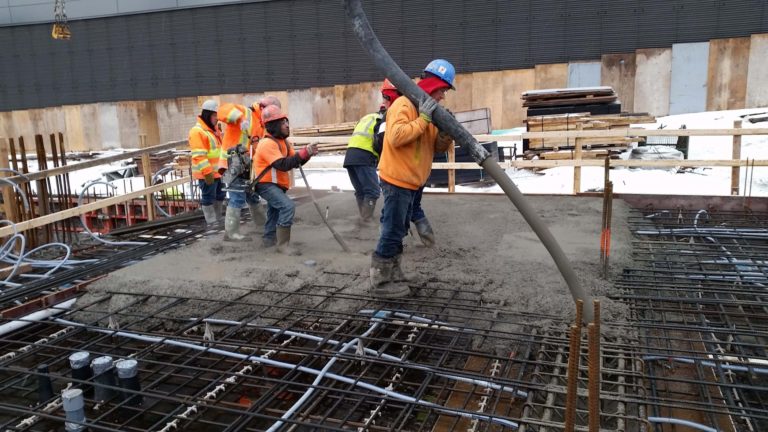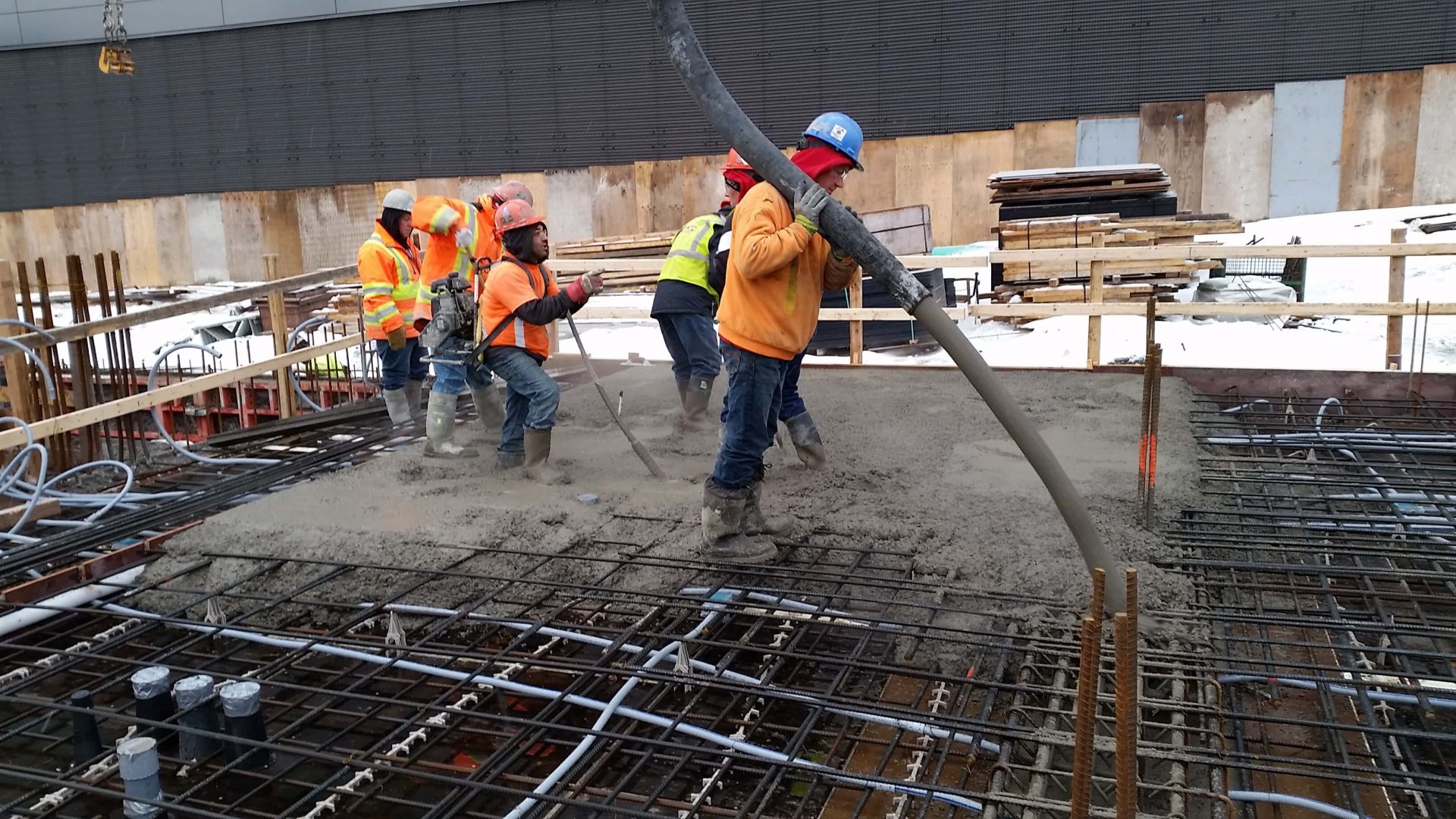As the leaves start to change, and the temperature starts to drop, construction companies are gearing up for the colder weather and all the potential challenges it will bring. This includes lag time and facing issues such as freezing of concrete at an early age, lack of required strength, improper curing, and improper protection of the structure. To prevent this, contractors you must use the right protection methods and tools to aid in creating durable, sustainable concrete. This is especially important for concrete pouring in winter as your structure is more susceptible to structural issues.

Before the Cold Weather Starts
As temperatures fluctuate concrete is subject to different curing conditions resulting in sporadic strength gain. Contractors must prepare long before the weather changes to adequately protect fresh concrete. Having the right equipment ready to use at the jobsite, such as; tarps and blankets can help avoid extraneous delays and unsafe concrete development. In the American Concrete Institute (ACI) 306: Guide to Cold Weather Concreting “cold weather” is defined as three or more consecutive days of low temperatures, specifically outdoor temperatures below 40 degrees F (4 degrees C) and air temperature below 50 degrees F (10 degrees C) for more than any 12-hour period.
Methods for Concrete Pouring in Winter
- Installing internal electric heating. This requires using embedded coils and insulated electrical resistors.
- Covering your slab with an insulated material after pouring. Layering helps maintain the heat that is generated from the concrete.
- Using insulated forms along side enclosures to increase effectiveness. This method needs to be closely monitored as to not heat concrete beyond its recommended temperature.
Optimizing Your In-situ Concrete for Cold Weather
- When working with early-age concrete, temperatures should be above freezing or within 10 degrees F (-12 degrees C) of the minimum required temperature, according to NPCA.
- The required temperature of concrete is >5 degrees C (40 degrees F) for 48hrs (ACI 306)
- The desired strength of concrete before freezing is 3.5 MPa/500 psi (ACI 306). Concrete that is below 3.5 MPa/500 psi can lead to cracking because it does not have the strength to resist the expansion of water due to ice formation.
- To protect concrete from freeze damage all concrete surfaces need to be protected within the first 24 hours of being placed.
- When removing ice, the volume of ice should not be more than 75 percent of the batch water (NPCA).
Temperature Monitoring in Winter With SmartRock®
Investing in a product like SmartRock, a wireless concrete sensor, can save significant time and money on a project. These wireless sensors are embedded in the formwork (attached on the rebar) of the concrete structure. They provide real-time data on temperature and strength during all stages of the curing process, from early-age to hardening. These measurements upload directly on the free SmartRock app (available for both iOS and Android devices), where they can be downloaded and shared with any team member. From there, you can view the minimum and maximum temperature values and track the temperature and strength history of your pour.
One of the biggest advantages of SmartRock is that it is completely wireless. This means you no longer need a separate costly data logger. Furthermore, you don’t have to worry about all of the costly complications that can happen with wired systems.
SmartRock’s ability to monitor the effects of the in-situ concrete and ambient temperatures make it easier to control concrete curing and ensure optimal strength gaining conditions. Equipped with real-time results, contractors can improve the heating process, decrease energy costs, and save time in their project schedule by knowing when to move on to subsequent construction operations, such as; formwork removal or post-tensioning.
**Editor’s Note: This post was originally published on August 27, 2018 and has been updated for accuracy and comprehensiveness.









One Response
Great Article very informative.